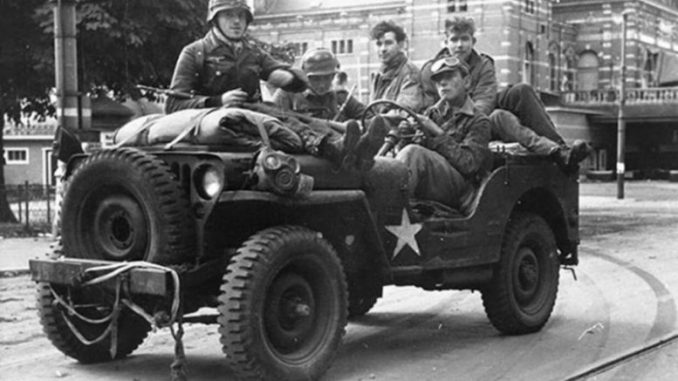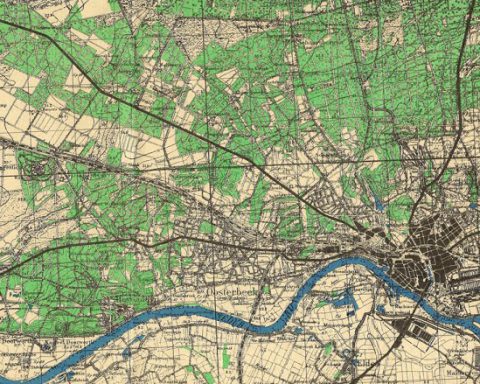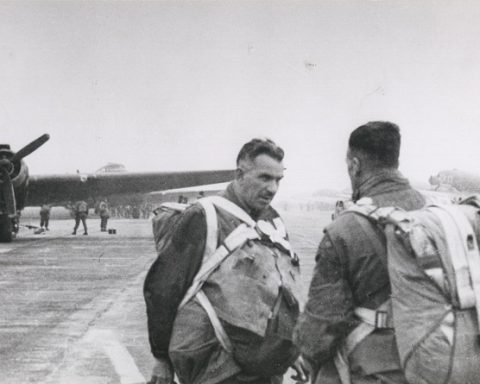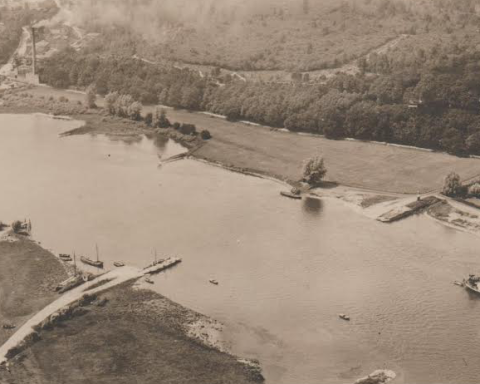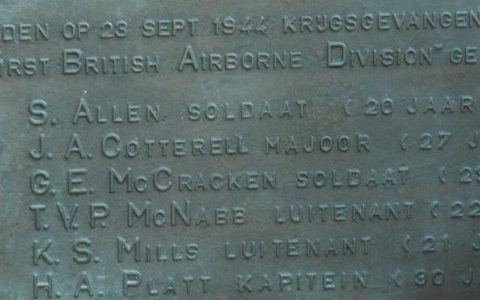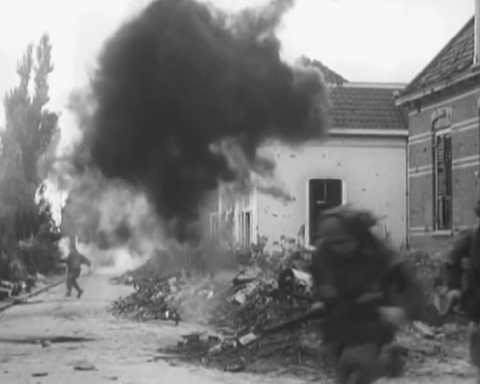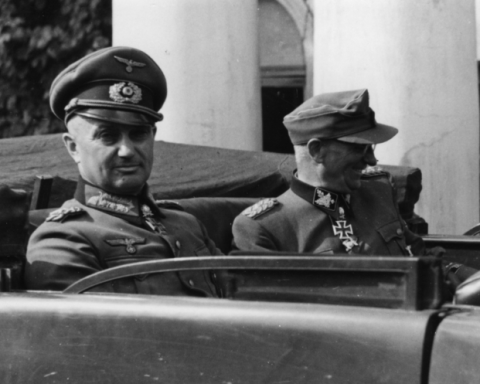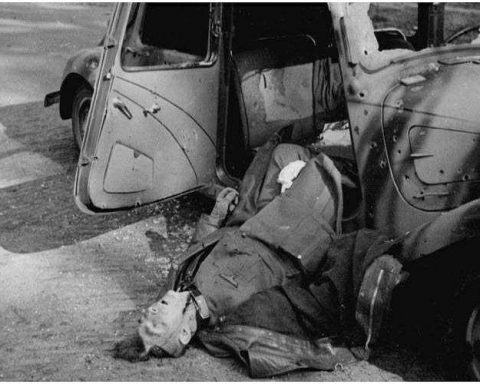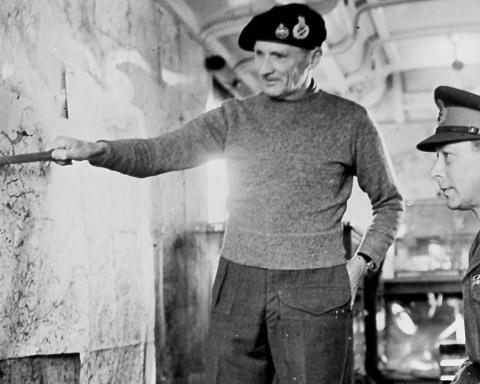Whoever says “Battle of Arnhem” says “a bridge too far”. The phrase is the title of the book that Cornelis Ryan wrote in 1974 about Operation Market Garden, and it is also the title of the film made by Richard Attenborough in 1977 in response to the book.
Browning
Many people think that the expression that Arnhem was “a bridge too far” is the conclusion that was drawn after the Battle of Arnhem. However, that is not true.
The statement was made a few days before the start of Operation Market Garden by British General Frederick “Boy” Browning. Browning was the commander of the British 1st Airborne Corps. The 1st Airborne Division led by General Urquhart and the Polish Parachute Brigade led by General Sosabowski were part of it.
The 1st Airborne Division was established by Browning in 1942. It was Browning who invented the maroon-colored berets for the paratroopers. He also had the famous Pegasus logo designed.
When Browning was informed by the planners of Montgomery about the plans for “his” paratroopers near Arnhem, he was told that the British had to occupy the bridges at Arnhem for two days before they were relieved by the ground troops.
Browning replied that the paratroopers could last four days. He later admitted to commander Roy Urquhart of the 1st Airborne Division that he had added, “But I think we might be going a bridge too far.”
The statement was recorded in 1973 by Cornelis Ryan when writing his book about Market Garden, after which the statement took on a life of its own.
So General Browning was skeptical about the plans with his airborne division. At the same time, he dismissed the (retrospective) criticism that was made of the plans.
He waved away warnings that German armored units had been seen near Arnhem. He denied that the distance between the landing areas and the bridges over the Rhine would be too far.
10 percent chance
There is another well-known statement made prior to the Battle of Arnhem about the outcome of Operation Market Garden. The statement is often attributed to the Polish airborne commander General Sosabowski.
“There is a ten percent chance that Operation Market Garden will be a success. But that only applies if the Germans decide to fight on the side of the Allies. ”
Whether Sosabowski actually said that is unclear. The fact is that the Polish general was very critical of the airborne landing at Arnhem.
He was one of the few to warn that the assumption that the German defense in Arnhem and surroundings consisted of “children and old men” was nonsensical. According to Sosabowski, the strength of the Germans was grossly underestimated.
He also found it very unwise not to fly all the troops at once.
Sosabowski’s criticism was against the sore leg of Browning, who himself was afraid that Arnhem was a bridge too far. After the Battle of Arnhem was lost, Browning blamed the Poles for the defeat.
Historians have since given the Poles full rehabilitation. Instead, General Browning is blamed for some of the failure of Operation Market Garden.
With his headquarters, Browning insisted on leading all airborne troops from the field. For that reason he landed with his staff of 500 men at Groesbeek with the American 82nd division.
Browning had never witnessed combat operations before, but if Market Garden were to be a success, the war would be over in a few months without him seeing any action and he wanted to prevent that.
British officers who took part in the airborne landings thought the idea was ridiculous. “Browning’s staff was used to a leisurely salon life and had never taken part in an exercise.”
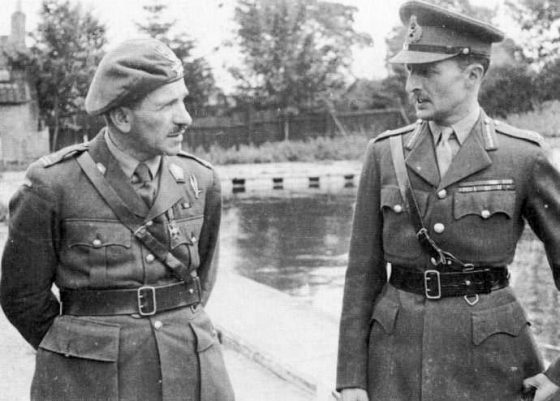
First stone
Martin Middlebrook, author of the great book “ Arnhem 1944 – The Airborne Battle ” concludes: “The participation of Browning and his staff laid the foundation stone for the tragedy in Arnhem. His presence at Nijmegen had an acute effect on the fate of the British troops who would land near Arnhem. ”
“The transportation of Browning’s headquarters with 38 gliders and 38 tugs meant that they were withdrawn from the contingent of aircraft available for landing near Arnhem.”
Thus, the man who said that Arnhem may be “a bridge too far” himself cooperated to make that statement true.
It is going too far to portray Browning as the main person responsible for the failure of the airborne landings at Arnhem, but it certainly did not help.
The main reason that Arnhem was indeed a bridge too far was the massive presence of hardened German troops near Arnhem.

